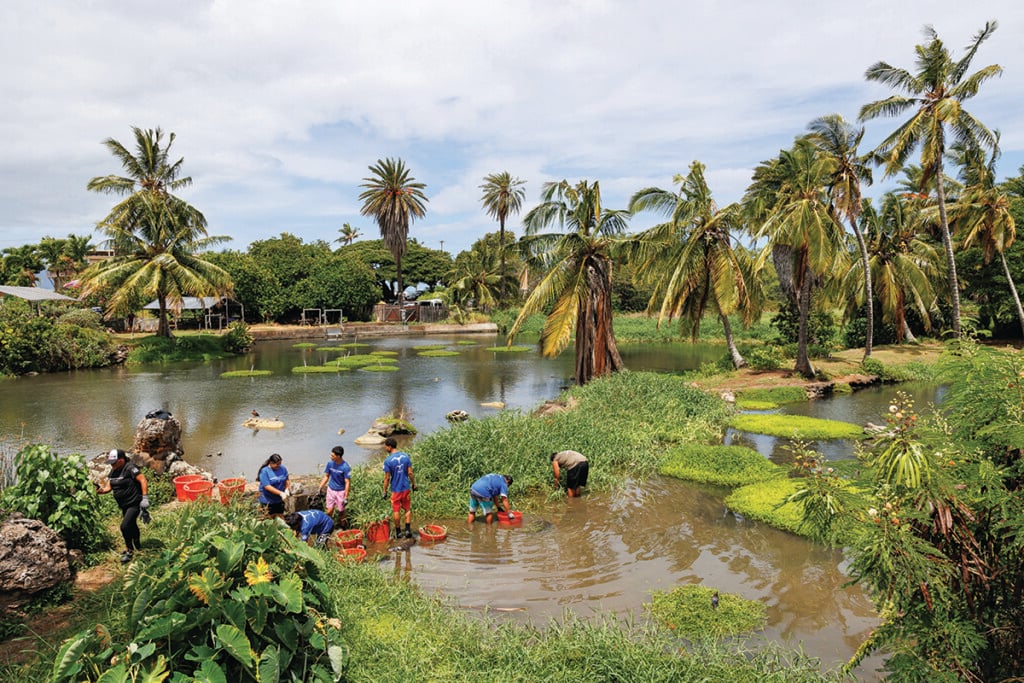Lava at Kilauea’s summit now visible to Hawaii Volcanoes National Park visitors

Late last week the lava lake within Halemaumau Crater atop Kilauea’s summit rose to its highest level since the 2008 eruption that formed it. With the rise in surface levels, molten lava in the lake and spattering above the vent rim are now visible to Kilauea summit visitors within Hawaii Volcanoes National Park.

Since the eruption began, the only visible sign of lava from the park’s best vantage at the Jaggar Museum observation deck has been its glowing reflection off of vent fumes.
Shortly after its formation, lava lake levels fluctuated often. It was not uncommon for the levels to be anywhere from 60 to 720 feet below the crater rim, always obscured from view. Since 2013, molten lava within the Overlook Crater basin has remained relatively steady somewhere between 100 ft. and 200 feet below the floor Halemaumau Crater.
Lava levels within Overlook Crater started rising on April 21 and reached the basin’s rim—lava levels have been high but variable with spattering since. This morning, Tues., April 28, a 7:53 a.m. update from the USGS Hawaiian Volcano Observatory (HVO) said the lava lake had again reached the rim of Overlook Crater but that lava has not yet overflowed onto the larger Halemaumau Crater floor. The lava has since remained 10-13 feet below the rim.

Check out this video from Hawaii Volcanoes National Park showing the lava lake’s record levels and taken the night of April 23.
The park has remained open during this activity, and, during the last few days, has welcomed thousands of additional visitors hoping to catch a glimpse of the lava. Park representatives have warned of long parking lines and crowded conditions. If possible, they suggest arriving at night—between 10 p.m. and 4 a.m.—to avoid the crowds.
Lava atop the volcano is part of an ongoing eruption that began during a small explosive event on March 19, 2008. When it happened, the eruption was the first explosive event within the summit crater since 1924.
Can’t make it to the park yourself or just want to see what’s happening before you go? Visit the USGS Hawaiian Volcano Observatory’s Kilauea summit webcams at various angles facing the lava here, here and here.


